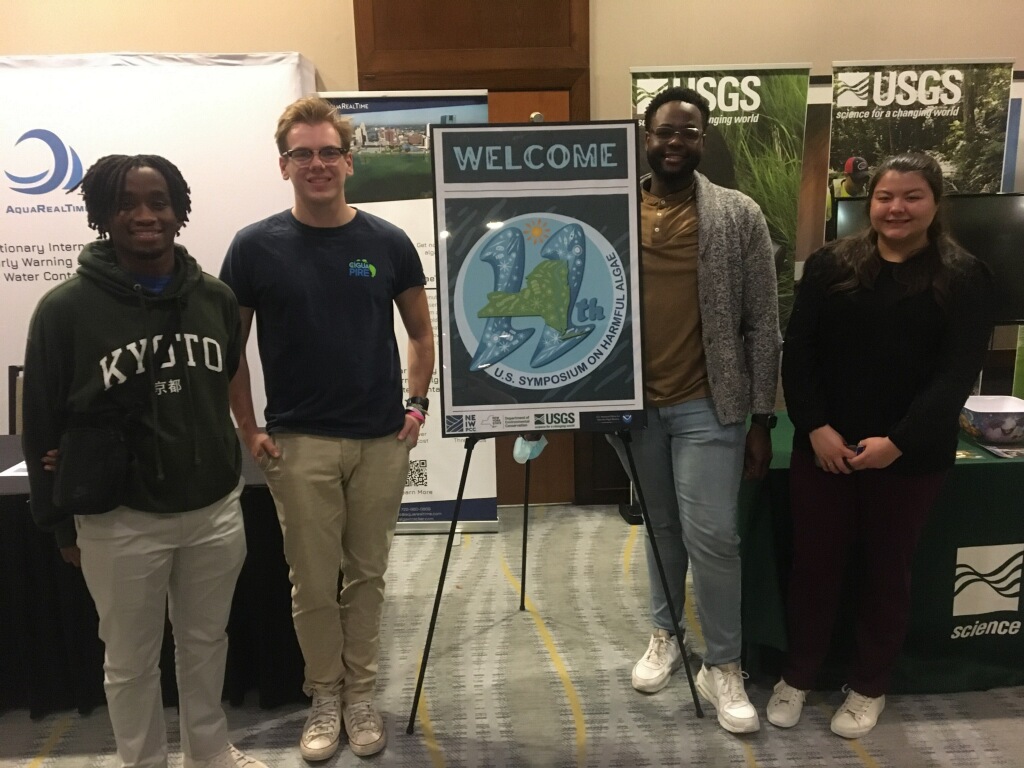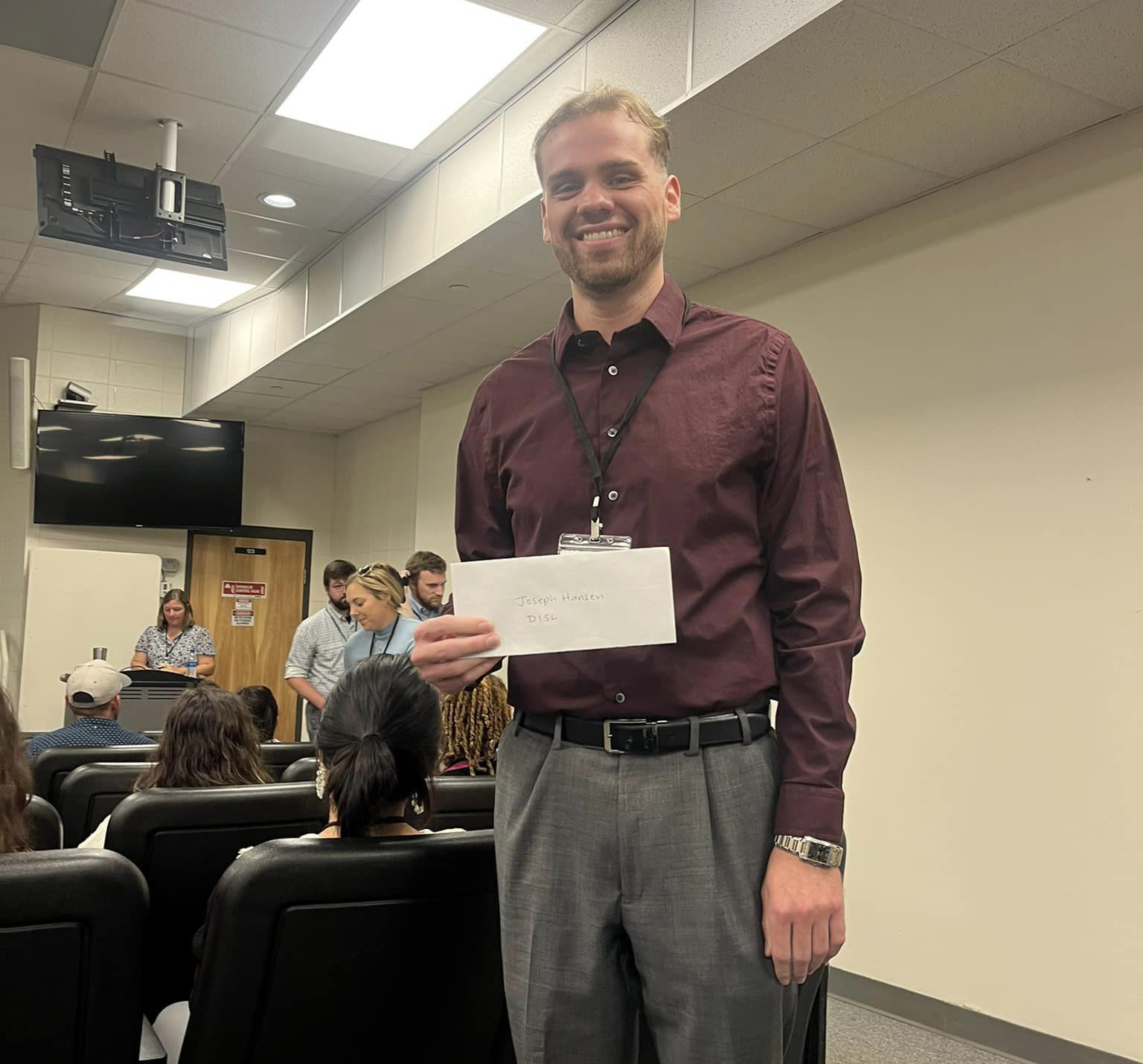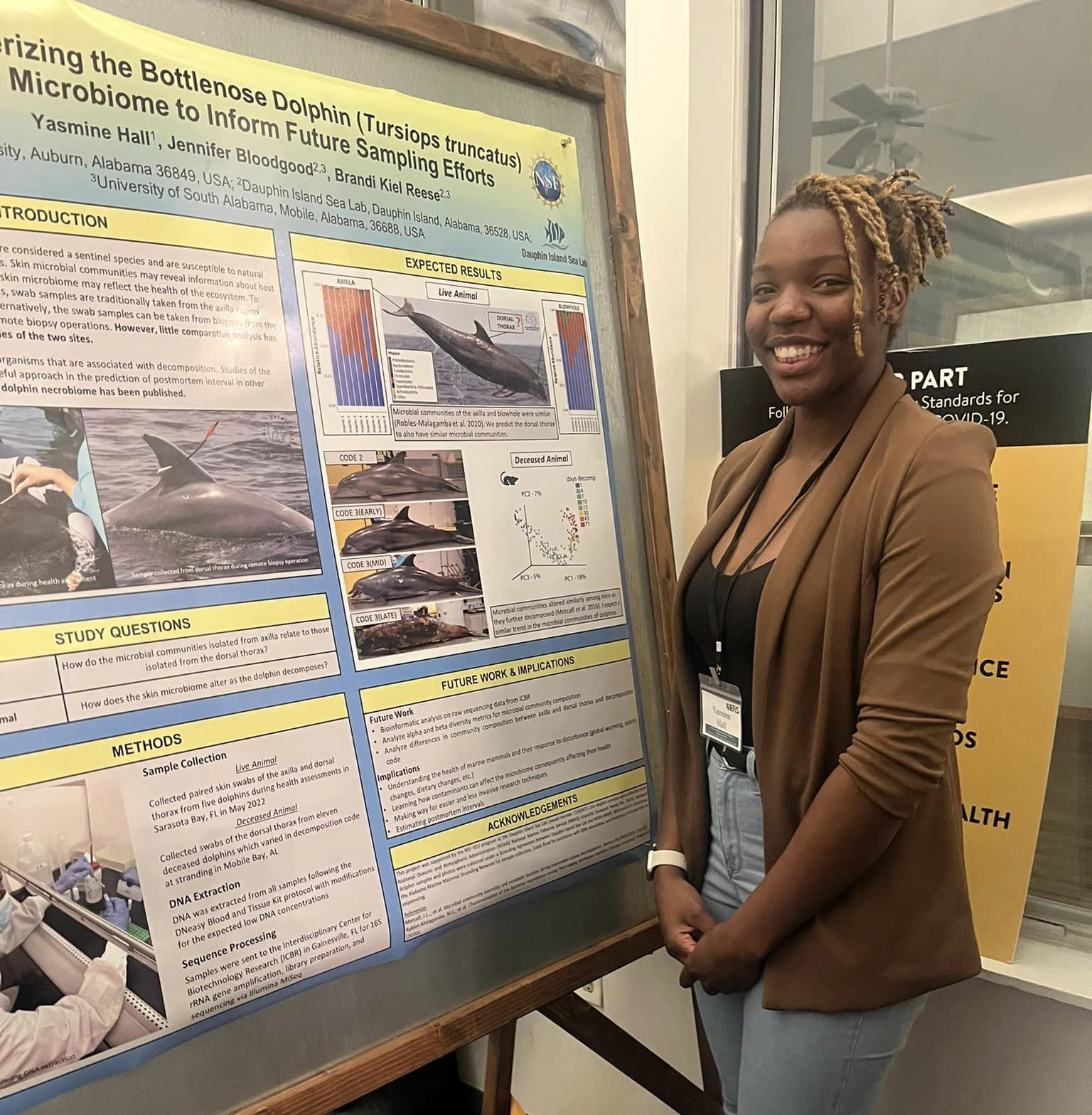(November 01, 2022) --
The Dauphin Island Sea Lab was well represented at the 11th U.S. Symposium on Harmful Algae (U.S. HABS) and the 2022 Gulf Estuarine Research Society (GERS) meeting. Students, faculty, and staff shared research findings and case studies during both meetings in late October. Both conferences were also memorable moments for five former NSF-REU students who took part in the program at the DISL campus.
The National Science Foundation-funded Research Experiences for Undergraduate (NSF-REU) provides students with an opportunity to carry out an independent research project under the guidance of a faculty mentor. Four DISL-REU participants presented at the U.S. HABS Symposium and one presented at the GERS meeting.

U.S. HABs Symposium
The theme for the U.S. HAB Symposium in Albany, New York was “Science to Support Solutions from Shore to Shore.” The research presented examined the prevalence of harmful algal blooms (HABs) in freshwater to marine systems and the solutions needed. A harmful algal bloom is created when the production of natural algae-produced toxins negatively impacts other organisms. Research led by DISL focused on ciguatoxins, brevetoxin, and algal biotoxins.
The four NSF-REU students presenting were Terrance Mitchell (2019), Sydney Markham (2020), Charles Dvergsten (2021), and Kenneth Murage (2022). The four students were co-first authors and presented a team poster together, titled “REU Experiences in Ciguatera Research: Evaluating Toxins from their Source, Through Marine Food Webs, and Behavioral Outcomes in Fish.”
It was also a big moment for Dvergsten who delivered an oral presentation on work that he and Murage did over the past two summers. The presentation on the full platform was titled, “It takes a community to toxify: Mechanisms of Toxicity in Five Commonly Cohabitating Epi-Benthic dinoflagellates.”
DISL graduate students that also presented posters and talks included Sean Collins, Jesse Gwinn, Alex Leynse, and Clay Bennett. The conference was a first for Collins. Bennett won best poster speed talk and Collins was runner-up.
Gulf Estuarine Research Society Meeting
The Gulf Estuarine Research Society meeting took place at the University of Southern Mississippi’s Gulf Research Lab in Ocean Springs, Mississippi. GERS is one of seven regionally based Affiliate Societies of the Coastal and Estuarine Research Federation (CERF). The goal of GERS is to promote research in the Gulf of Mexico.
Supporting that goal, DISL faculty, students, and staff presented their research on oyster resilience, manatee migration, seagrass habitats, and turtlegrass habitats. NSF-REU student Yasmine Hall joined the DISL team to present her research on bottlenose dolphins during the meeting. Masters student Joe Hansen won first place in the graduate poster competition and a student travel award.
The keynote speaker for the GERS Meeting was Dr. Leila Hamdan of the University of Southern Mississippi who serves as president for CERF.
Presentations and Posters:
HABs Presentations:

HABS Poster:
(Terrence Mitchell, Sydney Markham, Charles Dvergsten, and Kenneth Murage (DISL-REU Students)) REU Experiences in Ciguatera Research: Evaluating Toxins from Their Source, Through Marine Foodwebs, and Behavioral Outcomes in Fish

GERS Presentations:
-Habitat selection and abundance of West Indian Manatees (Trichechus manatus) at the margins of their expanding range (Carl S. Cloyed; Elizabeth E. Hieb; Kayla P. DaCosta; Monica Ross; Ruth H. Carmichael)
-Changing climate conditions and thermal refugia mediate extended West Indian manatee habitat use in the northern Gulf of Mexico (Elizabeth E. Hieb; Carl S. Cloyed; Kayla P. DaCosta; Ruth H. Carmichael)
-Scared strong: using predator cues to bolster oyster restoration and aquaculture (Delbert Lee Smee)
-Shallow seagrass versus fringing marsh habitat use by juvenile recruits of fish and macroinvertebrates in the northern Gulf of Mexico (Just Cebrian; Rebecca Gilpin; Laura West; Ryan Moody; Dottie Byron; Rachel Gamble; Ken Heck; Yee Lau; Whitney Scheffel)
-Large-scale differences in nekton assemblage, beta diversity, and functional diversity in turtlegrass (Thalassia testudinum)-dominated ecosystems across the northern Gulf of Mexico (Christian T. Hayes; Scott B. Alford; Benjamin A. Belgrad; Kelly M. Correia; M. Zachary Darnell; Bradley T. Furman; Margaret O. Hall; Charles W. Martin; Ashley M. McDonald; Delbert L. Smee; Samantha M. Smith; Kelly M. Darnell)
GERS Posters:
Demographics, skin lesion prevalence, and developing predictive indices for stranded bottlenose dolphins (Tursiops truncatus) exposed to low salinity (Cristina D. Clark; Jennifer G. Bloodgood; Carl S. Cloyed; Mackenzie L. Russell; Alissa C. Deming; Ruth H. Carmichael)
A novel technique for sampling the bottlenose dolphin skin microbiome (Joseph James Hansen; Jennifer Bloodgood; Brandi Kiel Reese; Kuttichantran Subramaniam; Thomas Waltzek; Kevin Barry; Thibaut Bouveroux; Carrie Sinclair; Ruth H. Carmichael)
Characterizing the bottlenose dolphin (Tursiops truncatus) skin microbiome to inform future sampling efforts (Yasmine J. D. Hall; Mackenzie L. Russell; Cristina Díaz Clark; Ruth H. Carmichael; Brandi Kiel Reese; Jennifer C.G. Bloodgood (equal contribution from two last coauthors))
The influence of marsh edge and seagrass habitat on fish and macroinvertebrates in a northern Gulf of Mexico coastal system (Rebecca L. Gilpin; Sarah D. Ramsden; Tia Offner; Ronald Baker; Just Cebrian)
Seagrass complexity drives changes in juvenile penaeid shrimp abundance and size classes in the northern Gulf of Mexico (Samantha M. Smith; Christian T. Hayes; Scott B. Alford; Benjamin A. Belgrad; Kelly M. Correia; M. Zachary Darnell; Bradley T. Furman; Margaret O. Hall; Charles W. Martin; Ashley M. McDonald; Delbert L. Smee; Kelly M. Darnell)